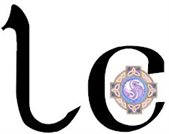Selecting Remedies, It’s Complicated
What do you have for a headache? What would you use for my skin rash? These are the sorts of questions asked of homeopaths. The answer probably frustrates many potential users of homeopathy because the short answer is something like, “nothing” or “figure out which of about 3000 or more remedies will help.” This prompts the homeopath’s question, do you want to get rid of this headache or would you rather stop the tendency to get headaches at all?
The longer answer becomes: Unlike allopaths or herbalists, homeopaths work with the very specific expressions of one person’s headache or the unique characteristics of another’s skin eruption. For example one person’s headache feels like it is, “ … bursting, maddening, heavy. … as if a thousand little hammers were knocking on the brain…” These pains are often over the eyes or in the temples and frequently are worse at 10am. Sun can cause the headache that might be worse from frowning, reading, or studying. Grief is a common factor in the headaches of one who MIGHT benefit from Natrum Muriaticum. But wait, there is more.
When it comes to skin and the multitude (good opportunity to use the word plethora!) of ways it can break out, the homeopath is very interested in information like, hot water makes it better or bathing makes it worse; or “it itches like crazy and there is nothing there!” Eating salt makes it itch more; or sweating relieves it. Does the rash come at a particular time of day, week, month, or even year? The careful observation and recognition of what makes symptoms better or worse is really important and all the various possibilities are called the modalities.
The headache I described is pretty specific. However, itching skin with nothing visible could indicate any one of 31, or more, different remedies. According to the software program I use, there are 756 remedies that might be used for “headache.” What is important to the homeopath is detail, modalities, AND the bigger picture. We want to know about not only the main complaint but also what accompanies that change from health. What happened in your life right around the time this ailment started? How does this current symptom affect you? Are the additional effects physical, mental, emotional, or functional? “Together they form the true and only conceivable portrait of the disease.” ~ Hahnemann in The Organon of Medicine.
The goal of a homeopath is not to temporarily relive or suppress (!) a symptom but to gently and permanently remove it. The result of the careful and investigative teamwork between the patient and the homeopath is about much more than one symptom, more than the name of a disease, more than the sum of its parts. Done well, a complete case taking shows the bigger pattern of this distress. The fuller the information, the better the remedy will match, and the deeper and more permanent the resolution will be.
all information presented is strictly for educational use and will never constitute medical advice. ©2016

